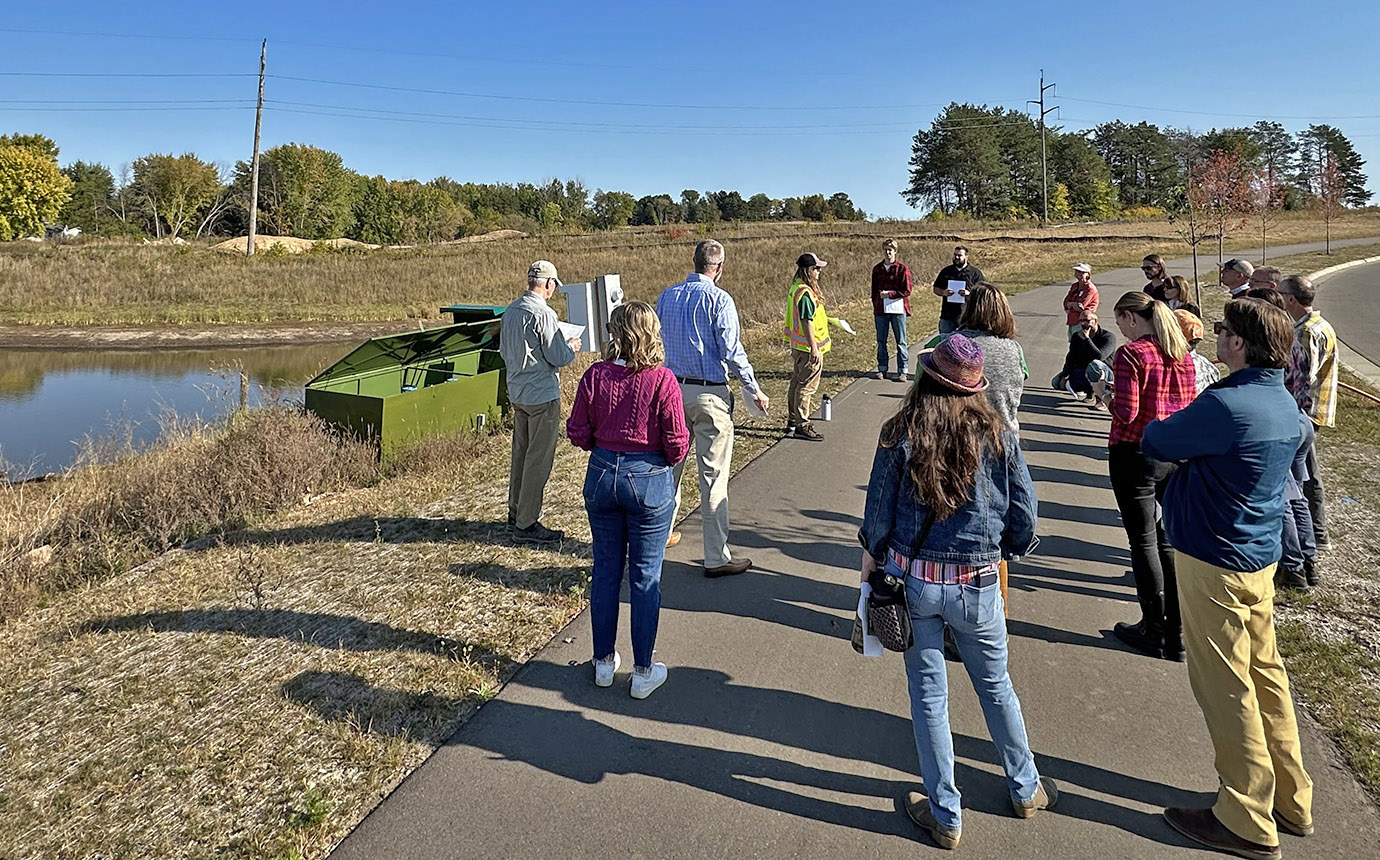
This fall, Freshwater co-hosted three visits to stormwater reuse sites with the cities of Waconia, Hugo and Woodbury, Minnesota. The goal was to invite attendees to see the sites firsthand and ask questions about their design, operation and maintenance. Below are some key takeaways, along with details about each site:
1. There is interest in implementing more stormwater reuse. We had around 20 people attend each site visit, including staff from cities, watershed organizations and state agencies; elected officials; contractors; business partners; and interested residents. Others who were unable to participate asked us to continue organizing these visits, inviting us to their sites in the future. People still have many questions about what it takes to implement reuse projects effectively, and there are numerous lessons to be learned from those who have tried.
2. These facilities reuse large volumes of water for irrigation. It was impressive to note the volume of water reused annually (tens of millions of gallons!), as well as how these systems are able to grow and scale over time, offsetting substantial potable water demand.
3. Every reuse site is different. Water quality, quantity, site design, ownership, operation and risk factors are different in each location. One had advanced water treatment, while another had no additional treatment. One had extensive inspections for privately installed facilities, while one was operating internally as a fourth utility.
4. Stormwater practitioners have varied experience with reuse. Some cities, watersheds and counties have been operating stormwater capture and reuse systems for years. Others are just starting to consider installations and want to learn more.
5. We can learn from each other. At each site, those involved with design and operation learned valuable lessons, and they were generous in sharing these with us. Compiling best practices into template design standards, calculators, water quality testing, operation and maintenance manuals, and template legal agreements would help share knowledge better.
6. Partnerships, grants and outside funding make these projects happen. Each of these projects received funding from multiple partners or developer fees, such as local watershed management organizations. This additional funding is vital to implementing reuse projects moving forward because of the large upfront costs associated with installation and the ongoing costs of operation and maintenance.
City of Waconia, September 26
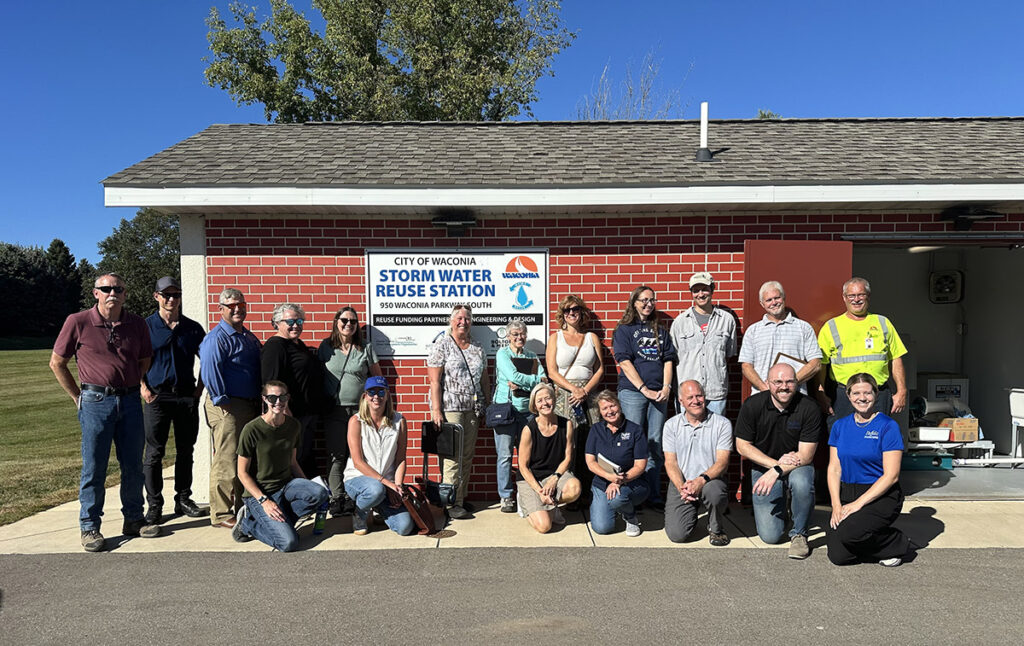
- The City of Waconia captures between 25-30 million gallons of stormwater per year for irrigation. These systems have been operating for several years. Carver County Watershed Management Organization was a strong partner in this work.
- These systems are on City property, pull water from a City stormwater pond, and deliver water in a purple pipe trunk watermain to private irrigation connections.

- The drivers for this project are stormwater management, specifically infiltration and water quality, along with the reduction of potable water use. Lake Waconia has water quality impairments.
- These systems were retrofitted into existing utility and irrigation systems.
- These projects have resulted in delaying the need for new groundwater wells in the City’s capital improvement plan.
- City reuse systems are operated as a reuse utility, as their fourth utility, with discrete water reuse rates and connection fees.
- City systems include treatment. Some systems are treated with chlorine disinfection. Others have filtration and ultraviolet disinfection systems. The level of treatment was decided by looking to California’s standards and retrofitting them to the City’s priorities.
- Irrigation happens exclusively overnight.
- Not all systems have a potable water backup supply. They were fortunate to operate during droughts.
- System designs are not similar across installations.
- Two City staff are required to perform operations and maintenance for the reuse district.
- The City is adding purple pipe into street reconstruction projects to build out and link the reuse utility to new areas in the future.
City of Hugo, October 1
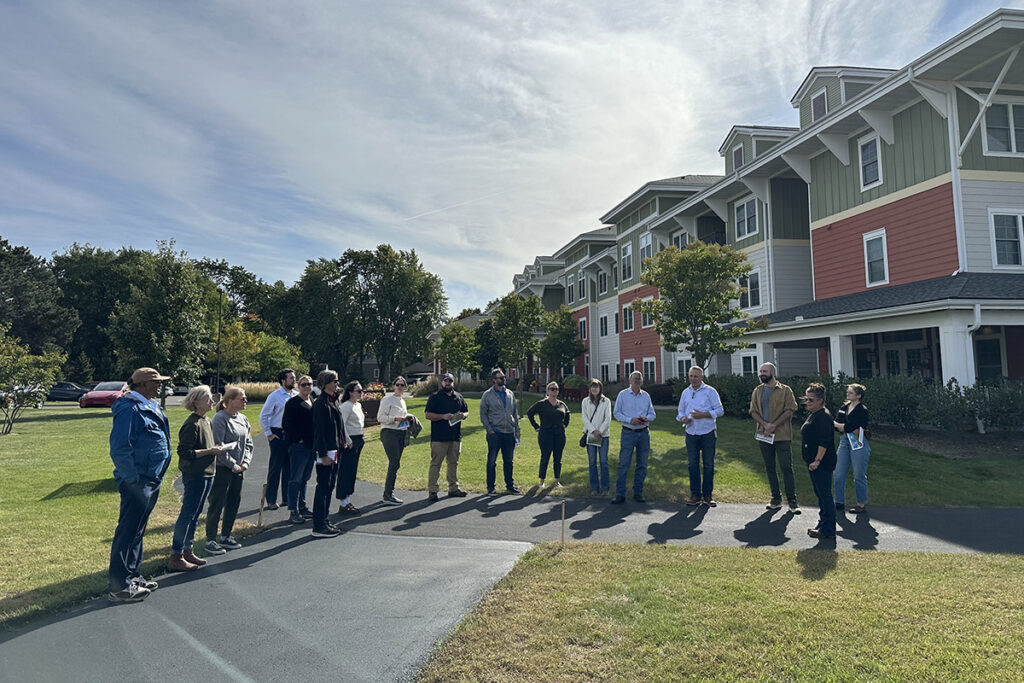
- The City of Hugo captures around 100 million gallons of stormwater per year for irrigation, which accounts for 25 percent of the city’s water use. These systems have been operating for several years.
- These systems are on City property, pull water from a City stormwater pond, and deliver water in a purple pipe trunk watermain to private irrigation connections.
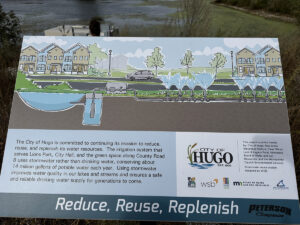
- The drivers for this project are stormwater management, specifically infiltration and water quality, along with the reduction of potable water use. The city has complicated factors with White Bear Lake area water use restrictions.
- These systems were both retrofits to existing infrastructure, incorporated into new development.
- The City has great educational signage on these systems! (see photo)
- These projects have resulted in the reduction of 4 new groundwater wells, and one water tower from the city’s 2030 capital improvement plan.
- The system we visited does not include stormwater treatment besides filtration.
- System designs are similar across installations.
- Developers signed a 25-year agreement to use the reuse water systems for irrigation. Users follow the same water irrigation schedules as other residents.
- There is an agreement between the city and a private maintenance contractor for operation.
- The city trains new maintenance contractors and is developing an operations and maintenance manual for the contracted maintenance teams.
City of Woodbury, October 9
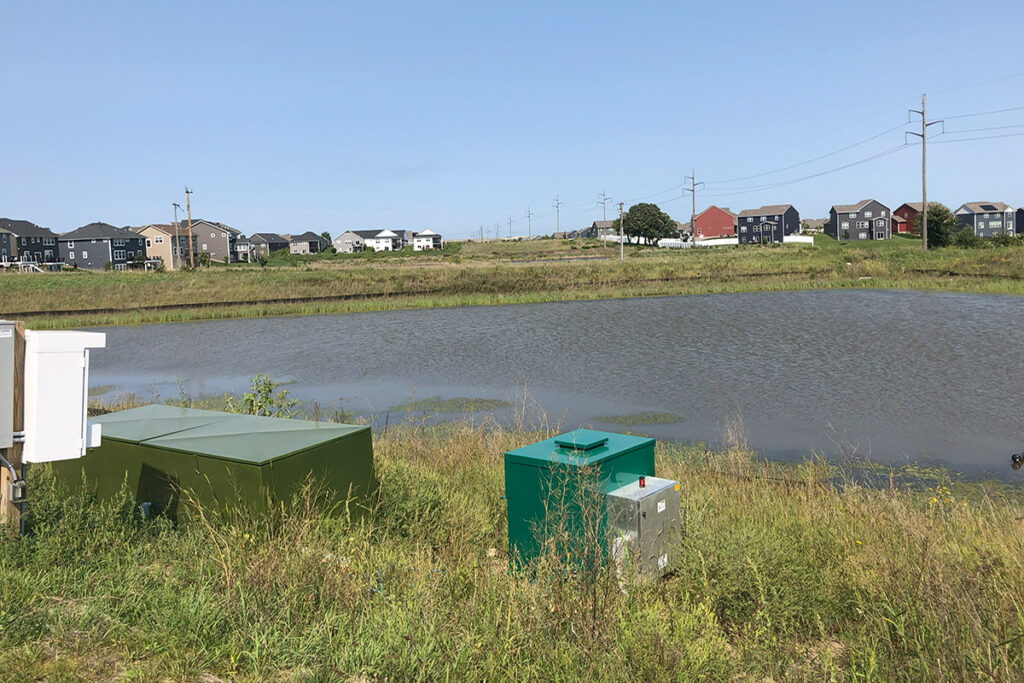
- The City of Woodbury captures around 62 million gallons of stormwater per year for irrigation. There are 25 systems in the city; 20 of them are privately owned and operated. Systems have been operating for several years.
- The drivers for this project are stormwater management and reduction of potable water use. The city has complicating factors with PFAS groundwater contamination and karst geology as well as goals for no net increase in water use through 2030.
- These systems were tied into new developments, therefore not retrofit.
- This system is on City property, and pulls from a City stormwater pond; however, it is owned and operated by a Homeowners Association (HOA) where each homeowner has their own controller.
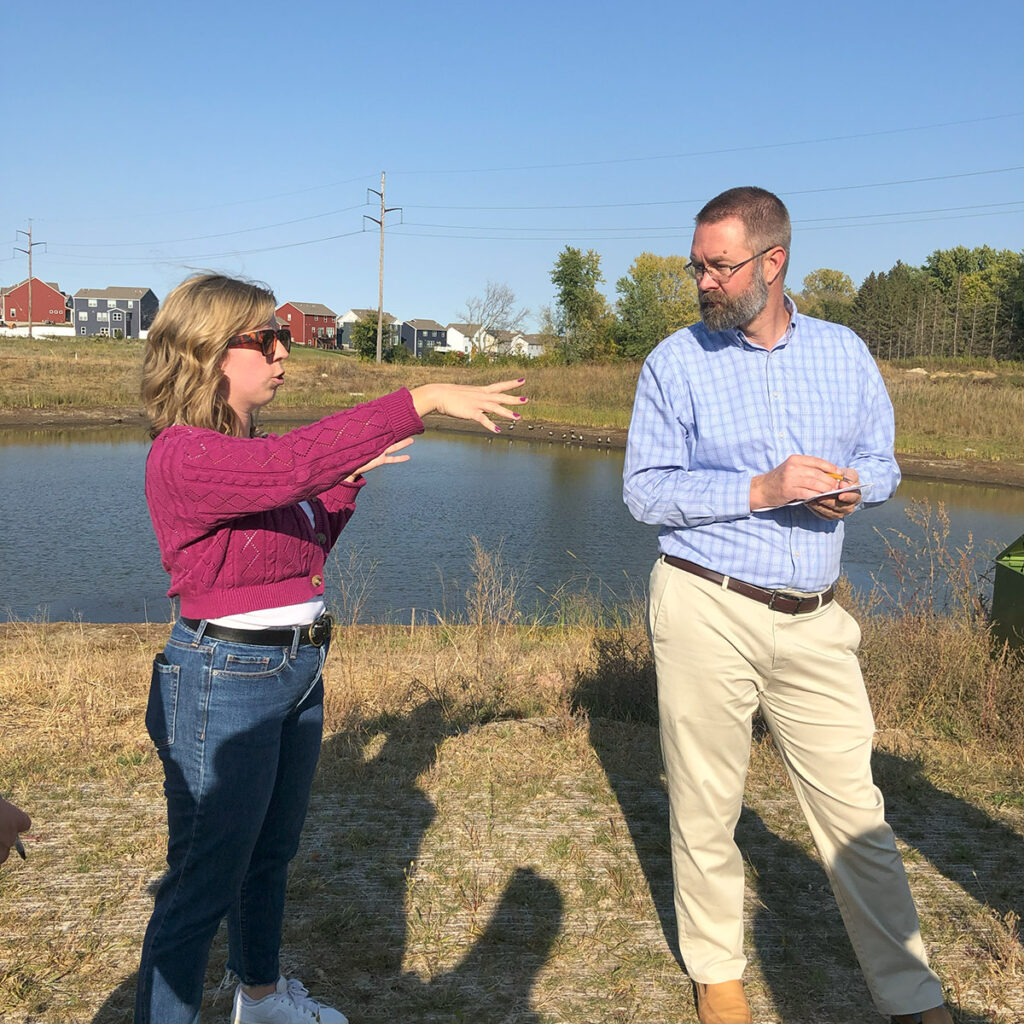
- The system we visited does not include stormwater treatment. Irrigation timing is based on HOA control.
- Irrigation is limited by the amount of green space available to irrigate.
- This project was developer-driven to meet stormwater requirements.
- There is an agreement between the City and HOA to operate this system, which includes inspection, enforcement and tracking.
- The City has developed design templates to standardize design and equipment across installations and prevent cross connections.
- The City is developing a handout on operational requirements for HOAs and meets with them annually to check on operation and maintenance. Their inspection program has been through many changes over the years, responding to new challenges and needs with the reuse being a popular stormwater treatment option for developers. They are working toward a more consistent set of standards to help streamline the inspection program, along with operation and maintenance moving forward.
Next steps
Freshwater is committed to advancing the circular water economy in Minnesota, including publication of an upcoming white paper on the subject. Sharing knowledge and opportunities around water reuse supports shared learning and inspires new projects.
Did you attend one of these site visits? If so, thank you for joining us! Have other ideas for how we can help? Please let us know!